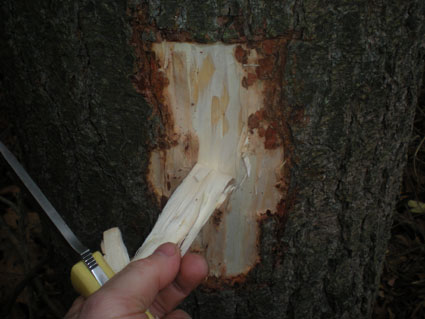If you’re like me, when you’re hiking somewhere with foliage, you’re either on the lookout for plants like poison ivy or poison oak, or you’re hiking behind someone who knows what they’re looking for. I admire people who can look at a plant species and immediately identify it, listing off potential benefits or reasons to avoid it. Yet even with the appreciation for this skill, our generation seems to lack botanists, or people who can identify plants. However, knowing the uses or dangers of plants is a valuable skill, and can mean the difference between life and death.
Many plants in the Adirondacks are dangerous, including poison ivy, stinging nettle, and common honeysuckle. Poison ivy is well known – perhaps because it is so wide-spread. This type of perennial grows in a variety of climates, and is most identifiable by its clusters of three notched leaves. Not as many people know that poison ivy also produces hairy, poisonous, thick vines that grow up trees (Dangerous Plants 2016). Poison ivy, like its friend stinging nettle, is should be avoided at all costs, as most people will develop a painful rash shortly after touching it.
 |
| Identification of Poison Ivy from http://www.legendlake.info/poison-ivy.html |
Stinging nettle is another perennial that has identifiable short stinging hairs on both its stems and leaves that produce a burning and itching sensation in its victim. It is another very common plant, and it easily identifiable by its jagged-edged, notched leaves(Dangerous Plants 2016). In addition to leaves and stems, some innocent-looking berries can be very dangerous to human health upon consumption. For example, the small, red berries of the common honeysuckle are toxic to humans and can induce intense vomiting. To be safe, if you don’t know what it is, it’s best to avoid touching it or putting it in your mouth.
 |
| Information about Common Honeysuckle from http://empressofdirt.net/plants-poisonous-berries/ |
Even though there are some harmful and dangerous plants living in the wilderness, there are also some very beneficial and possibly tasty plants,such as pine and cattail Surprisingly, the common pine tree contain an edible inner bark that has valuable nutritious properties (Warren 2014). To harvest this edible layer, all you need to do is use a knife to cut under the top bark of a pine branch to reach the edible inner bark layer, which can be chewed or prepared in various ways. A former Adirondack Native American tribe survived harsh winters by consuming pine (Warren 2014).
 |
| The edible portion of pine bark. Image from http://tacticalintelligence.net/blog/how-to-eat-a-pine-tree.htm |
Cattail, a common wetland plant, is also edible, assuming the water source is clean. Grasping cattail at the base, you can pull upwards to free the plant from the muddy soil (Warren 2014). Peel away the outer leaf layers until the interior color is white. Like pine, this can also be eaten raw or steamed (Warren). While I have never tried eating these plant species, it would be an interesting experience to try! However, I strongly recommend only tasting plants in the presence of a knowledgeable botanist.
In a world that is growing farther apart from nature, we need to acknowledge and use the knowledge that generations of people before us have gathered, especially relating to beneficial and harmful plants. Who knows - some day, it might come in handy!
Sources:
Dangerous Plants. New York State Government. Department of Transportation. 2016.
yaba daba doooooooooooooooooooooooooooooooooooooooo
ReplyDelete